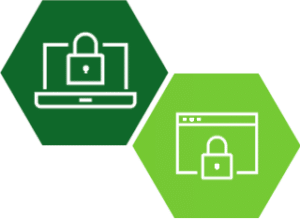Hace poco nos adentramos en lo que implica el riesgo de los proveedores y la gestión del riesgo de los proveedores. Una vez comprendido que se trata del riesgo derivado de los proveedores, es sencillo ampliarlo y establecer que la evaluación del riesgo de proveedores (ERP), o revisión del riesgo de proveedores, es el proceso de identificar y evaluar todos los riesgos potenciales asociados a las operaciones y productos de los proveedores, y cómo pueden afectar potencialmente a su organización.
Entonces, ¿cómo realizar una evaluación de riesgos de proveedores externos?
- En primer lugar, hay que determinar cuáles son los efectos más plausibles de los acontecimientos inciertos.
- Una vez identificadas estas consecuencias, hay que medirlas y priorizarlas.
Existen varios tipos de riesgos potenciales, entre los que se incluyen el riesgo para la reputación, el riesgo legal y de cumplimiento, el riesgo estratégico, el riesgo cibernético (como las brechas de seguridad), el riesgo financiero y el riesgo operativo. La única forma de mitigar estos riesgos es llevar a cabo la diligencia debida y la supervisión de proveedores, basándose en la evaluación de riesgos de proveedores que realice.
¿Cuál es la diferencia entre proveedor, vendedor, tercero y prestador de servicios?
Muchas personas utilizan estos términos indistintamente, pero existen diferencias ocasionales que debe conocer antes de realizar su evaluación de riesgos de proveedores. Veamos cómo se definen estos términos:
- Un proveedor es una persona o entidad que pone bienes y servicios a disposición de una empresa o proveedor de servicios. Los proveedores suelen estar en el espacio transaccional B2B y a menudo son el primer eslabón de una cadena de suministro.
- Un vendedor es una persona o entidad que compra bienes o servicios a una empresa o proveedor y luego los revende a otros. Los vendedores se ocupan de la compra y distribución de bienes de los fabricantes a los consumidores, y se consideran el último eslabón de la cadena de suministro.
- Un tercero es una persona o empresa externa encargada de proporcionar productos y servicios a los consumidores en nombre de su organización. Se trata de un "tercero" porque no es ni el proveedor ni el cliente principal en una relación comercial.
- Un proveedor de servicios es una organización que (¡obviamente!) presta servicios a sus clientes.
¿Por qué es importante la gestión del riesgo de los proveedores?
Para evitar interrupciones
Su programa de gestión de riesgos de proveedores (VRM) debe garantizar que sus proveedores externos, productos y servicios no interrumpan su negocio ni le causen graves daños financieros o a su reputación. Un programa VRM eficaz garantizará la continuidad del negocio.
Reducir la exposición al riesgo
A medida que su organización subcontrata partes de su negocio a proveedores, aumentan las posibilidades de que éstos tengan acceso a propiedad intelectual confidencial o a información sensible. Puede tratarse de datos internos de la empresa o de información relacionada con los clientes. Su programa VRM debe ayudarle a mitigar los riesgos para conseguir un entorno empresarial más seguro. La mayoría de las empresas exigen a sus proveedores que cumplan y respeten las normas internas, gubernamentales e industriales.
Externalizar conocimientos
El hecho de que los proveedores introduzcan y aumenten sus riesgos no significa que deba intentar evitarlos por completo. Una opción para su organización es externalizar la gestión del riesgo de proveedores. La subcontratación de expertos es una buena opción, ya que le garantiza que está en buenas manos y que la gestión de proveedores tiene un conocimiento actualizado de las mejores prácticas.
El proceso de evaluación del riesgo de los proveedores
1. Hacer inventario
El primer paso es hacer un inventario de todos los proveedores para asegurarse de que todos y cada uno de ellos están contabilizados. Puede que haya varios que no le vengan a la mente inmediatamente, como un servicio de limpieza con el que trabaja su organización. Hacer inventario le permite identificar los riesgos a los que está expuesto.
2. Determinar el nivel de riesgo
Una vez que tenga su inventario, tendrá que medir qué grado de riesgo supone cada uno de los proveedores. Algunos tendrán acceso a mucha más información, mientras que otros puede que no interactúen en absoluto con datos sensibles. Clasifíquelos en cubos utilizando un único método de clasificación, de forma objetiva, para determinar el riesgo: ¿riesgo bajo, medio o alto? El proceso debe ser disciplinado, ya que la evaluación interna de riesgos debe ser un proceso fácilmente repetible.
3. Evaluar a los proveedores
El siguiente paso consiste en hacer las mismas preguntas a todos los proveedores de sus categorías. Su objetivo es tener una visión general del nivel de riesgo de cada proveedor, y su organización decidirá entonces si el nivel de riesgo merece la pena o no para hacer negocios o continuar haciendo negocios con un proveedor en particular. Otra opción para reducir el riesgo con un proveedor puede ser añadir más condiciones, como consideraciones contractuales, una mayor supervisión o una diligencia debida más exhaustiva.
¿Puntos clave en la gestión del riesgo de los proveedores?
Más allá del proceso anterior, he aquí algunos consejos para garantizar que su evaluación de riesgos de proveedores se lleve a cabo de forma eficaz.
-
Disponer de una declaración o marco de propensión al riesgo
Una declaración o marco de apetito por el riesgo es clave para gestionar el riesgo de los proveedores. Como señala Deloitte,
"Un Marco de Apetito por el Riesgo eficaz ha sido identificado como un componente crítico de un marco eficaz de gestión de riesgos y gobernanza y un facilitador clave para las organizaciones que desean impulsar el rendimiento y capacitar al personal en todos los niveles para tomar decisiones oportunas y conscientes del riesgo."
En esencia, una declaración de tolerancia al riesgo marca la pauta de su gestión del riesgo. Su organización tiene muchas más probabilidades de cumplir sus objetivos estratégicos cuando la tolerancia al riesgo está vinculada a sus metas y objetivos.
-
Gestionar el riesgo de cada producto
Más allá de evaluar a cada proveedor, gestione el riesgo también hasta cada producto -o servicio- ofrecido.
-
Establecer un marco de control y una norma de evaluación
Ser objetivo es la clave para garantizar que todos los proveedores cumplen las mismas normas.
-
Identificar los tipos de riesgo
Utilícelos para determinar qué tipos de riesgo son más y menos importantes para usted.
-
Rastrear términos clave
Identifique las condiciones clave bajo las que negocia con los proveedores en todos sus contratos con ellos.
-
Informe sobre métricas
Una vez que identifique y decida en qué métricas relacionadas con los proveedores se centrará, asegúrese de informar sobre ellas de forma coherente. Algunas opciones son la productividad del equipo, el tiempo medio entre la identificación y la resolución de problemas de cumplimiento y el presupuesto.
-
Supervisar los riesgos y los resultados a lo largo del tiempo
La evaluación del riesgo de los proveedores no sólo debe realizarse repetidamente, sino que también hay que hacer un seguimiento de cualquier cambio en el riesgo a lo largo del tiempo para comprender si esto modifica o no la relación con su proveedor.

Defiéndase contra los riesgos de proveedores y empresas
Conozca nuestras soluciones VRM/ERM, las mejores de su categoría.



